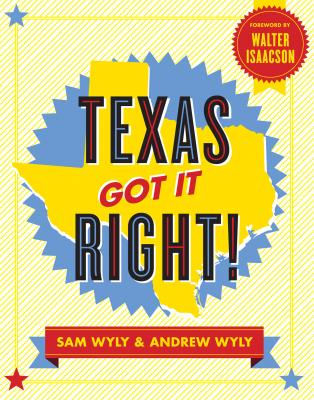ТОП просматриваемых книг сайта:
Texas Got It Right!. Sam Wyly
Читать онлайн.Название Texas Got It Right!
Год выпуска 0
isbn 9781595910769
Автор произведения Sam Wyly
Жанр Экономика
Издательство Ingram
retreat, but he was not heeded until too late.) Right: The 576-foot-
tall San Jacinto Monument is the world’s tallest column, taller than
the Washington Monument. Its 220-ton star commemorates the
site of the Battle of San Jacinto.
TEXAS GOT IT RIGHT!
27
In his 2011 book, American Nations, Colin Woodard
makes the case that America's political and cultural
landscape is not divided along red-state/blue-state or
even regional geographic lines, but along generations-
old cultural boundaries that can be traced to
migration patterns and belief systems dating to the
colonial era. Within those boundaries lie eleven
"nations," each with its own distinctive set of values
and political leanings. Out East you've got the cosmo-
politan mercantile culture of the New Netherlands
(originating with the Dutch settlements that would
become New York City) and the Calvinist civic-mind-
edness of Yankeedom. Farther down, you've got the
caste-oriented plantation culture of the Deep South;
out in the Rockies and beyond you've got the hard-
bitten, government-wary culture of the Far West; and
TEXAS GOT IT RIGHT!
28
so on. The frontiers where these nations meet can be
fault lines that breed sectarian division. They can also
make for dynamic convergences. Take a look at where
Texas is on that map. Here, the brawling, independent-
minded Scots-Irish of Greater Appalachia come up
against the Quaker-influenced apple-pie Americanism
of the Midlands and the deep-rooted democratizing
forces of El Norte, a region of Spanish heritage rooted
in the earliest missionary adventures in the New
World. Encroaching from the southeast are the aristo-
cratic ideals of the Deep South. It all makes for a
heady mix—progressivism and libertarianism min-
gling with old-school conservatism and even
revolutionary sentiment—that has no equal in North
America. Here, America’s old fiefdoms blend to
become something new, something purely Texan.
The history of the early settlement of
Texas is more a tale of migration than
immigration—specifically the epic west-
ward movement of Scots-Irish families from
their beachheads in Appalachia. “They arrived in
great numbers,” wrote James Michener of these
Borderer clans, in his book Texas, “filtering down the
famed Natchez Trace from Pennsylvania, Ohio,
Kentucky, and Tennessee. They were a resolute, cou-
rageous, self-driven, arrogant lot.” The Scots-Irish set
the feisty character of the republic and of the state
that followed, but they were not the only European
national group to shape the destiny of Texas. Starting
in the 1840s, Germans came in droves too, establish-
ing the town of Fredericksburg and creating a
German-speaking belt that stretched across much of
the state. Czechs and Poles soon fol-
lowed. Those peoples managed to
preserve their language and folkways
for a generation or two, but soon enough
Texas would change them. Carved from the
bosom of Mexico, Texas gave rise to a hybrid culture
like no other. That culture was self-selecting, draw-
ing out the best traits of each group that settled
here: the tolerant pluralism of northern European
immigrants, the scrappy individualism of the
Scots-Irish, the reformist drive of Hispanic Texans,
and so on. The story continues today, as new
groups, many from traditional immigrant hubs like
California and New York, are absorbed into Texas’s
welcoming fold.
Fourth of July parade on Main Street, Fredericksburg, 1905.
TEXAS GOT IT RIGHT!
29
In the hours and days after Hurricane Katrina, as buses
from New Orleans started rolling into Houston—which
eventually took in some 240,000 people fleeing the
storm’s aftermath—word went out among staff at the
city’s hospitals and shelters that they should stop call-
ing the newcomers “refugees” or even “evacuees,” but
rather “guest citizens.” It was a quintessentially Texan
TEXAS GOT IT RIGHT!
30
gesture, and it grew from the understanding that
extending hospitality means more than an offer of food
and shelter. It means honoring the innate human
dignity of those you’re helping. Is it any wonder
that 150,000 of those former Louisianans eventually
decided to lay down roots and become Texans?
And proud, productive Texans at that. You could say
that this kind of hospitality is just in our DNA,
and you’d be right, but Texans’ attitude toward out-
siders and newcomers goes even deeper than good
manners and good works. Really, it comes down to a
basic belief shared by millions of Texans that a big
tent and open arms make for a more dynamic and
prosperous place.
Left: After Hurricane Katrina, the Houston Astrodome was a
haven for those

